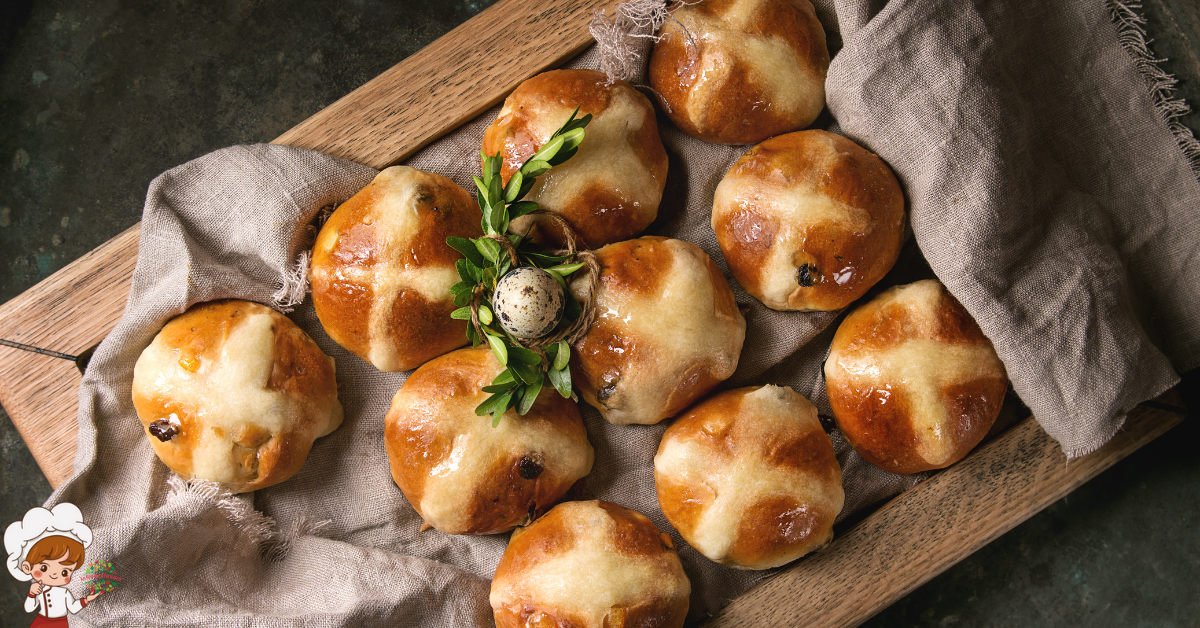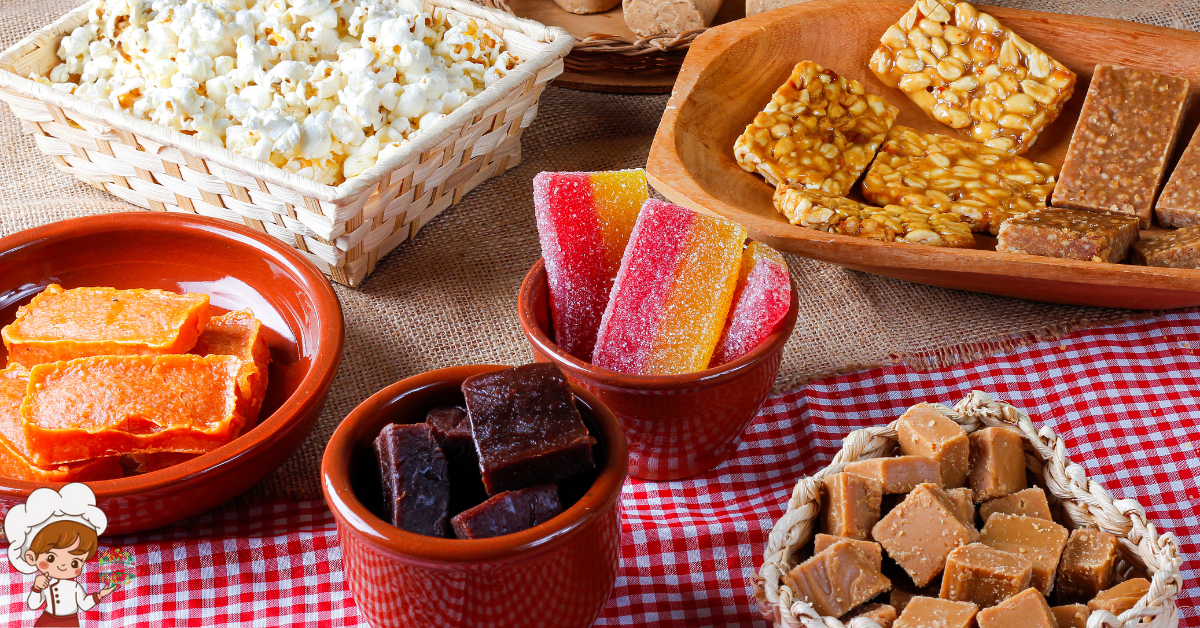The Amazing Easter Tradition Hot Cross Buns

Hot Cross Buns, with their delicate sweetness and iconic cross topping, are a beloved treat associated with the Easter holiday. This humble baked good carries with it centuries of history, tradition, and symbolism.
Origins in Ancient Traditions:
The origins of Hot Cross Buns can be traced back to ancient pagan rituals and springtime celebrations that predate Christianity. In ancient cultures, the arrival of spring was a time of great significance, symbolizing renewal, fertility, and the awakening of nature after the long winter months.
During these pagan festivities, small cakes or buns marked with a cross were baked and offered as sacrifices to various deities, including Eostre, the goddess of spring and fertility. These offerings were made to invoke blessings for a bountiful harvest and to ensure prosperity in the coming year. The cross symbolized the four quarters of the moon, the changing seasons, or the sun’s rays, depending on the specific beliefs of the culture.
These early baked goods were often flavored with spices and sweeteners, reflecting the abundance of ingredients available during the spring season. The act of baking and sharing these buns was an integral part of communal celebrations, fostering a sense of unity and solidarity among the people.
As Christianity spread and assimilated pagan customs, many of these ancient traditions were absorbed into Christian holidays, including Easter. The symbolism of the cross was reinterpreted within the Christian context to represent the crucifixion of Jesus Christ, giving rise to the iconic Hot Cross Buns that are now synonymous with the Easter holiday.
Despite their ancient origins, Hot Cross Buns continue to be enjoyed today as a symbol of both religious significance and the changing of the seasons. With each bite, they offer a taste of history and tradition, linking us to the rich tapestry of human culture and spirituality across the ages.
Christian Symbolism:
Hot Cross Buns have deep-rooted Christian symbolism, closely associated with the Easter holiday. The significance of the cross topping on these buns is deeply intertwined with the story of Jesus Christ’s crucifixion and resurrection.
According to Christian tradition, the cross represents the crucifixion of Jesus, with the dough symbolizing his body and the cross signifying the cross on which he was crucified. The practice of marking the buns with a cross likely emerged as a way for Christians to commemorate the solemnity of Good Friday and the joyous celebration of Easter Sunday.
The use of spices in the dough also carries symbolic meaning in Christian theology. Ingredients like cinnamon, nutmeg, and cloves were thought to represent the spices used to anoint Jesus’ body before his burial, making Hot Cross Buns a poignant reminder of the events leading up to and following Jesus’ crucifixion.
As Christians gather to observe the Easter holiday, the consumption of Hot Cross Buns serves as a tangible reminder of the central tenets of the faith—redemption, sacrifice, and the promise of new life. These buns are not just a culinary delight; they are a testament to the enduring significance of Easter in the Christian calendar and the beliefs that underpin it.
Medieval Roots:
The history of Hot Cross Buns can be traced back to medieval Europe, where they were initially known simply as “cross buns.” During the Middle Ages, these buns were often consumed throughout the year, with variations in ingredients and shapes depending on regional customs and religious observances.
In medieval England, cross buns were associated with various religious festivals and observances, including Lent and Easter. They were typically made with enriched dough, flavored with spices such as cinnamon, nutmeg, and allspice, and studded with currants or raisins.
The cross marking on the buns served both a practical and symbolic purpose. From a practical standpoint, the cross helped to divide the dough into individual servings, while also preventing the buns from sticking together during baking. Symbolically, the cross represented the Christian faith and was a reminder of Jesus’ crucifixion.
During the medieval period, cross buns were often sold by street vendors and bakers, particularly during Lent and Easter. They were a popular treat among both the wealthy and the common folk, enjoyed as a sweet indulgence during times of fasting and abstinence.
Over time, the tradition of eating cross buns became more closely associated with Easter, as the buns came to symbolize the crucifixion and resurrection of Jesus Christ. By the late medieval period, Hot Cross Buns had become a staple of Easter celebrations across Europe, a tradition that continues to this day.
Superstitions and Traditions:
The tradition of Hot Cross Buns is steeped in superstitions and rituals that date back centuries. In medieval times, these buns were believed to possess magical properties, and consuming them was thought to bring good luck and ward off evil spirits.
One superstition surrounding Hot Cross Buns was that they had medicinal properties and could cure various ailments. It was believed that carrying a Hot Cross Bun in one’s pocket could protect against illness and bring healing. Some people even used crumbs from Hot Cross Buns as charms or talismans to ward off sickness.
Another popular belief was that Hot Cross Buns baked on Good Friday would never spoil and could be kept throughout the year as a form of protection against misfortune. These buns were often hung in the home or placed in the rafters to ward off evil spirits and ensure good luck.
In addition to their supposed medicinal properties, Hot Cross Buns were also associated with love and romance. In some regions, it was customary for young women to give a Hot Cross Bun to their sweetheart on Good Friday as a token of affection. It was believed that sharing a Hot Cross Bun with someone you loved would strengthen the bond between them and bring happiness and prosperity.
Despite their association with Good Friday and Easter, Hot Cross Buns were sometimes eaten on other occasions as well. In some cultures, they were served at weddings to symbolize fertility and prosperity, while in others, they were enjoyed on New Year’s Day to bring good fortune for the coming year.
Today, many of these superstitions and traditions surrounding Hot Cross Buns have faded, but the buns remain an enduring symbol of Easter and are enjoyed by people around the world as a delicious and nostalgic treat.
Modern Traditions:
Today, Hot Cross Buns remain a beloved Easter tradition in many parts of the world. While the traditional recipe includes spiced dough studded with currants or raisins and topped with a cross of icing or pastry dough, there are now countless variations to suit different tastes. Some bakers add additional spices or dried fruit, while others experiment with chocolate chips or glazes.
Cultural Significance:
Hot Cross Buns have long held a special place in various cultures around the world, symbolizing not only religious significance but also cultural traditions and community connections.
In England, Hot Cross Buns were traditionally eaten on Good Friday, marking the end of Lent and the beginning of Easter celebrations. The cross on the bun symbolized the crucifixion of Jesus Christ, making them a poignant reminder of the religious significance of Easter.
Beyond their religious symbolism, Hot Cross Buns were also associated with superstitions and traditions. It was believed that Hot Cross Buns baked on Good Friday possessed special powers, including the ability to ward off evil spirits and ensure good luck for the coming year. Some people would keep a Hot Cross Bun from Good Friday and hang it in their homes as a form of protection against misfortune.
In addition to their religious and superstitious significance, Hot Cross Buns also became a cherished part of communal gatherings and social rituals. Families and neighbors would come together to bake and share Hot Cross Buns, strengthening bonds and fostering a sense of community spirit.
Over time, the tradition of eating Hot Cross Buns spread beyond England to other parts of the world, including countries with Christian populations. Today, Hot Cross Buns are enjoyed by people of various faiths and cultural backgrounds, not only as a delicious Easter treat but also as a symbol of unity, tradition, and the enduring spirit of celebration.

Hot Cross Buns
Ingredients
- For the buns:
- 4 cups all-purpose flour
- 1/4 cup granulated sugar
- 1 teaspoon salt
- 1 tablespoon active dry yeast
- 1 1/4 cups warm milk
- 1/4 cup unsalted butter melted
- 1 large egg
- 1/2 cup raisins or currants
- 1 teaspoon ground cinnamon
- 1/2 teaspoon ground nutmeg
- 1/4 teaspoon ground cloves
- Zest of 1 orange optional
- For the crosses:
- 1/2 cup all-purpose flour
- 4-5 tablespoons water
- For the glaze:
- 1/4 cup apricot preserves
- 1 tablespoon water
Instructions
- In a large mixing bowl, combine the warm milk and sugar. Sprinkle the yeast over the mixture and let it sit for about 5-10 minutes until frothy.
- In a separate bowl, sift together the flour, salt, cinnamon, nutmeg, and cloves. If using orange zest, add it to the flour mixture.
- Once the yeast is activated, add the melted butter and egg to the milk mixture. Mix well.
- Gradually add the flour mixture to the wet ingredients, stirring until a dough forms. Fold in the raisins or currants.
- Turn the dough out onto a lightly floured surface and knead for about 8-10 minutes until smooth and elastic.
- Place the dough in a greased bowl, cover with a clean kitchen towel, and let it rise in a warm, draft-free place for about 1-2 hours or until doubled in size.
- Once the dough has risen, punch it down and divide it into equal-sized balls. Place the balls on a greased baking sheet, leaving some space between each one.
- Cover the buns with a clean kitchen towel and let them rise again for another 30-45 minutes.
- Preheat your oven to 375°F (190°C).
- In a small bowl, mix together the flour and water to form a thick paste for the crosses. Transfer the paste to a piping bag or plastic bag with a corner snipped off.
- Pipe crosses onto the tops of the buns.
- Bake the buns in the preheated oven for 15-20 minutes or until golden brown.
- While the buns are baking, prepare the glaze. In a small saucepan, heat the apricot preserves and water over low heat until melted and smooth.
- Once the buns are done baking, brush them with the apricot glaze while they’re still warm.
- Allow the buns to cool slightly before serving. Enjoy your homemade Hot Cross Buns as a delightful Easter treat!
Conclusion: Hot Cross Buns
Hot Cross Buns are more than just a baked good—they are a symbol of Easter’s rich tapestry of tradition, faith, and community. Whether enjoyed for their religious significance or simply for their delicious flavor, Hot Cross Buns continue to hold a special place in the hearts of people around the world during the Easter season.








